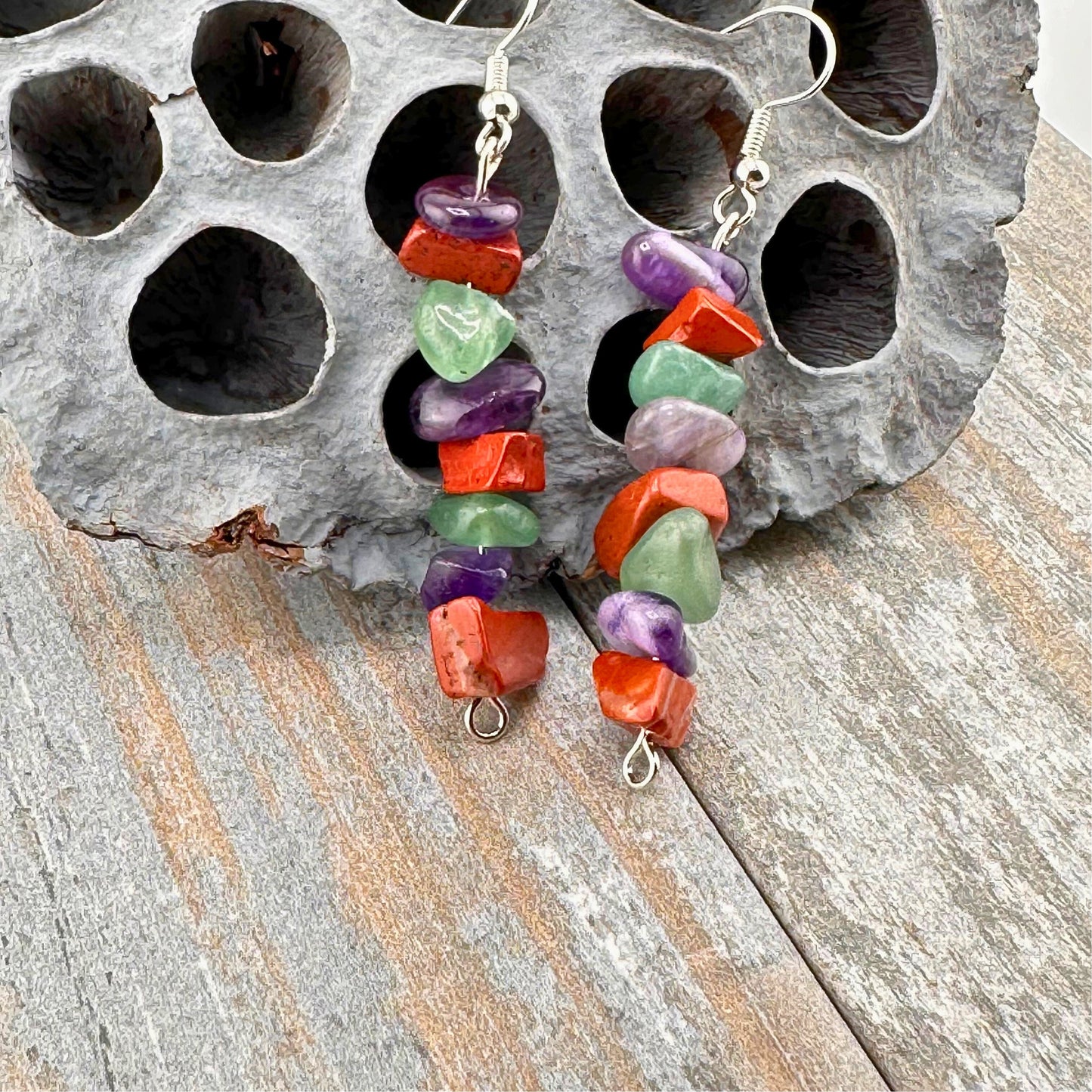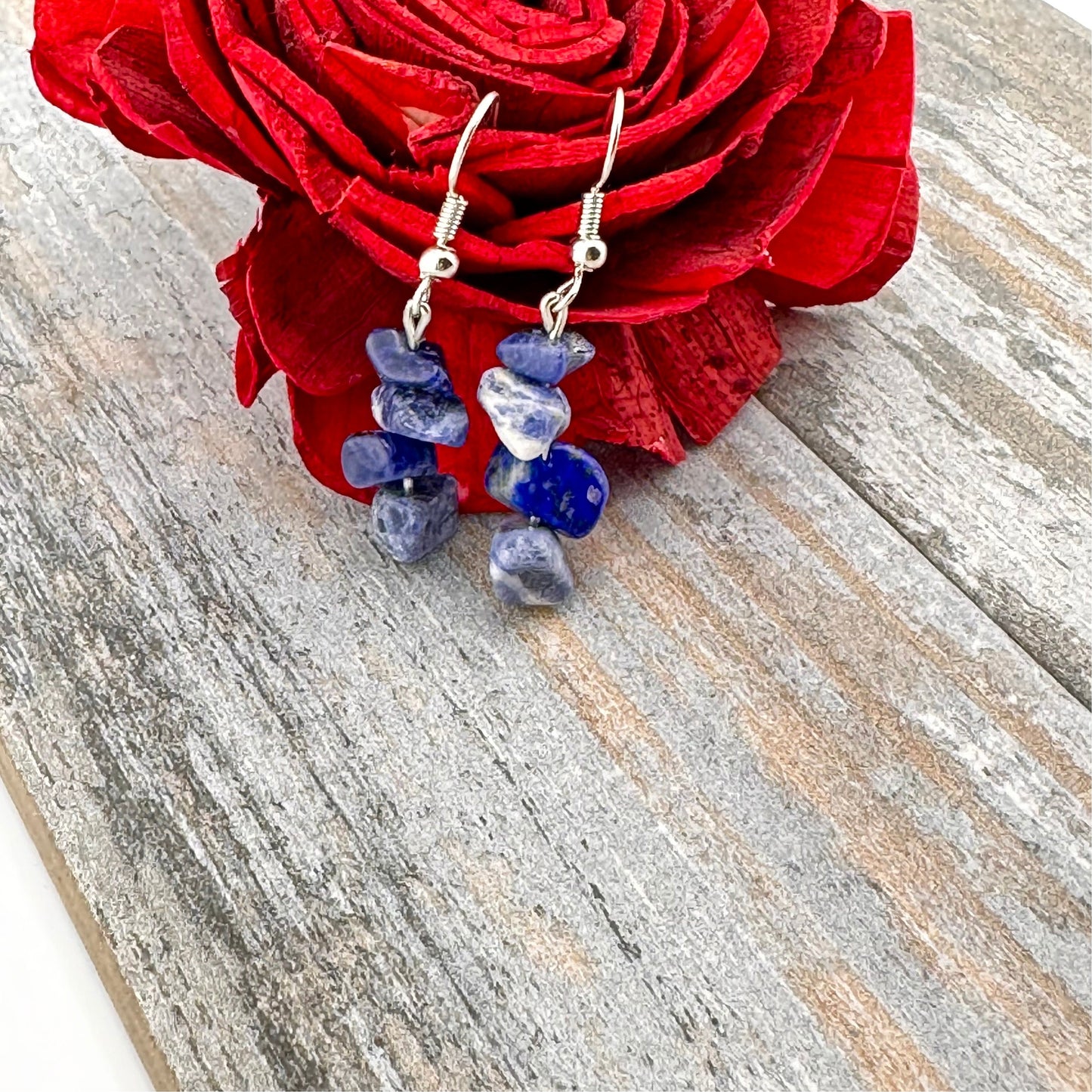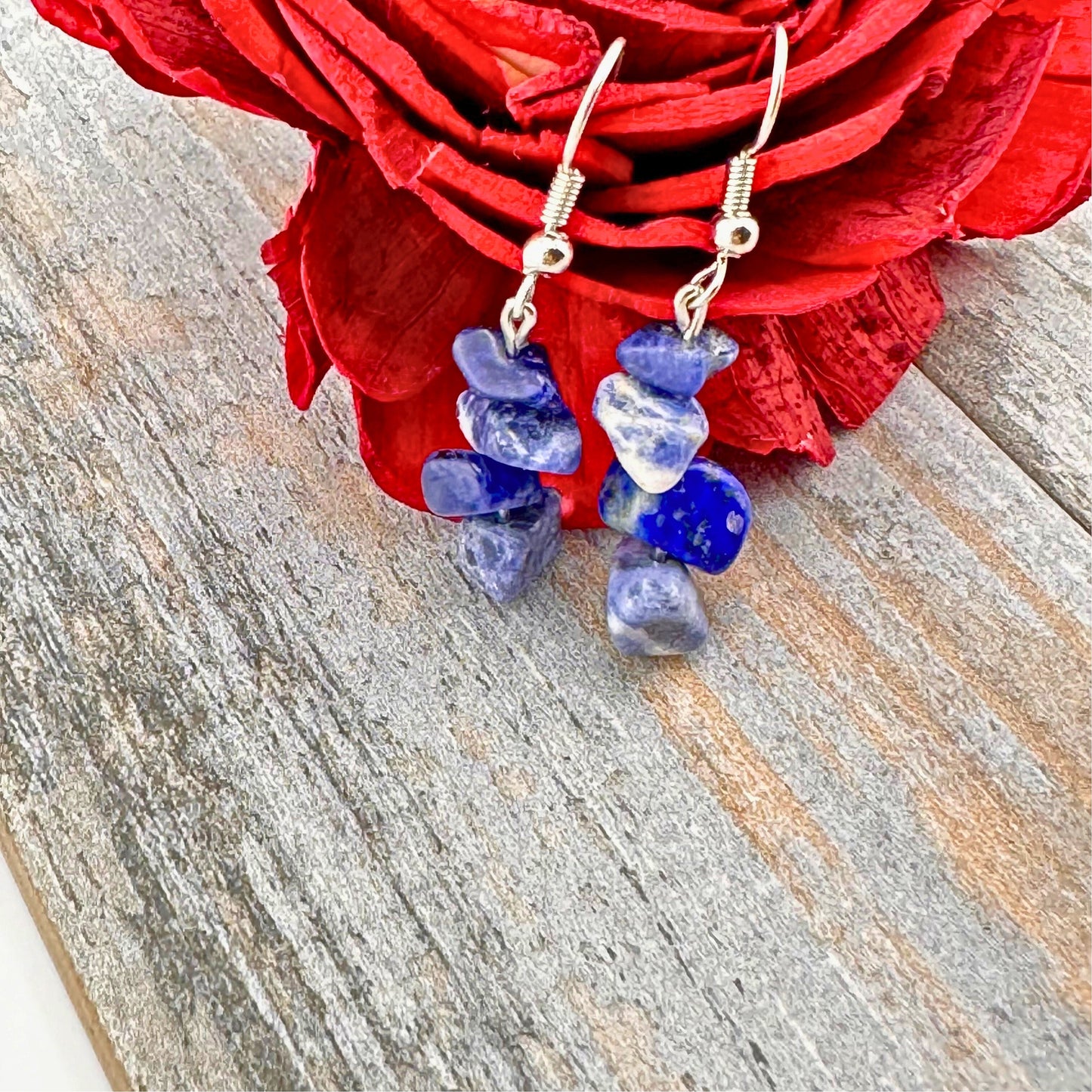1
/
of
4
Amethyst Earrings Custom to your likes and desires.
Amethyst Earrings Custom to your likes and desires.
Regular price
$7.99 USD
Regular price
Sale price
$7.99 USD
Taxes included.
Quantity
Couldn't load pickup availability
Amethyst Earrings Custom to your likes and desires.
Amethyst is a violet to purple variety of quartz, a popular gemstone that has been prized for its beauty and metaphysical properties for centuries. It is the birthstone for February and is often used in various types of jewelry, including rings, necklaces, and earrings. Here are some key features and facts about the amethyst stone:
1. Color: The color of amethyst ranges from pale lilac to deep purple, with the most valuable and sought-after shade being a rich, royal purple.
2. Origin: Amethyst can be found in various locations around the world, including Brazil, Uruguay, Zambia, Russia, and some parts of the United States.
3. Hardness: On the Mohs scale of mineral hardness, amethyst ranks 7, making it relatively durable and suitable for everyday wear.
4. Spiritual and Healing Properties: Amethyst has long been associated with spiritual and healing properties in various cultures. It is often considered a stone of protection, purification, and balance. Many believe that it can help promote calmness, inner peace, and spiritual awareness.
5. Birthstone and Zodiac Sign: As mentioned earlier, amethyst is the birthstone for February. It is also associated with the zodiac signs of Aquarius and Pisces.
6. Uses: Apart from being used in jewelry, amethyst is also used for ornamental purposes, such as in sculptures, vases, and other decorative items.
7. Cut and Clarity: Amethyst is commonly cut into various shapes and sizes for use in jewelry. The clarity of amethyst varies, and some stones may contain inclusions or natural impurities.
8. Synthetic Amethyst: Due to its popularity, synthetic or lab-grown amethyst is also available in the market. These stones have the same chemical composition as natural amethyst but are created in controlled laboratory conditions.
9. Cleaning and Maintenance: To clean amethyst jewelry, use mild soap and warm water with a soft brush or cloth. Avoid harsh chemicals and ultrasonic cleaners, as they may damage the stone.
Remember that while many people believe in the metaphysical properties of gemstones like amethyst, the effects are subjective and not scientifically proven. If you're interested in the spiritual aspects of amethyst or any other gemstone, it's essential to explore and understand these beliefs from various sources.
Amethyst is a violet to purple variety of quartz, a popular gemstone that has been prized for its beauty and metaphysical properties for centuries. It is the birthstone for February and is often used in various types of jewelry, including rings, necklaces, and earrings. Here are some key features and facts about the amethyst stone:
1. Color: The color of amethyst ranges from pale lilac to deep purple, with the most valuable and sought-after shade being a rich, royal purple.
2. Origin: Amethyst can be found in various locations around the world, including Brazil, Uruguay, Zambia, Russia, and some parts of the United States.
3. Hardness: On the Mohs scale of mineral hardness, amethyst ranks 7, making it relatively durable and suitable for everyday wear.
4. Spiritual and Healing Properties: Amethyst has long been associated with spiritual and healing properties in various cultures. It is often considered a stone of protection, purification, and balance. Many believe that it can help promote calmness, inner peace, and spiritual awareness.
5. Birthstone and Zodiac Sign: As mentioned earlier, amethyst is the birthstone for February. It is also associated with the zodiac signs of Aquarius and Pisces.
6. Uses: Apart from being used in jewelry, amethyst is also used for ornamental purposes, such as in sculptures, vases, and other decorative items.
7. Cut and Clarity: Amethyst is commonly cut into various shapes and sizes for use in jewelry. The clarity of amethyst varies, and some stones may contain inclusions or natural impurities.
8. Synthetic Amethyst: Due to its popularity, synthetic or lab-grown amethyst is also available in the market. These stones have the same chemical composition as natural amethyst but are created in controlled laboratory conditions.
9. Cleaning and Maintenance: To clean amethyst jewelry, use mild soap and warm water with a soft brush or cloth. Avoid harsh chemicals and ultrasonic cleaners, as they may damage the stone.
Remember that while many people believe in the metaphysical properties of gemstones like amethyst, the effects are subjective and not scientifically proven. If you're interested in the spiritual aspects of amethyst or any other gemstone, it's essential to explore and understand these beliefs from various sources.
Share








